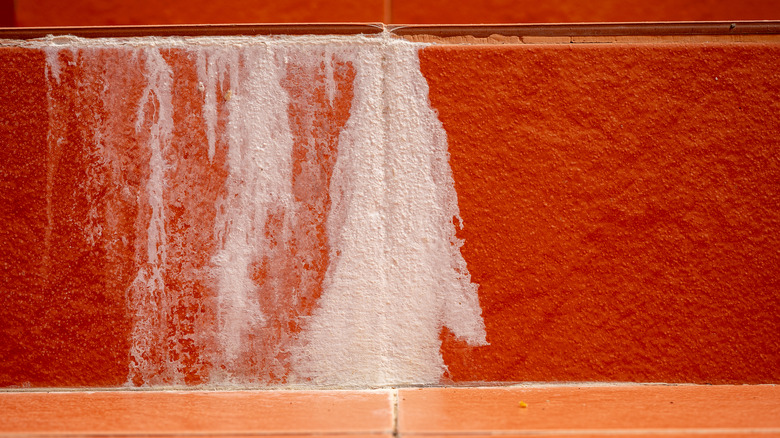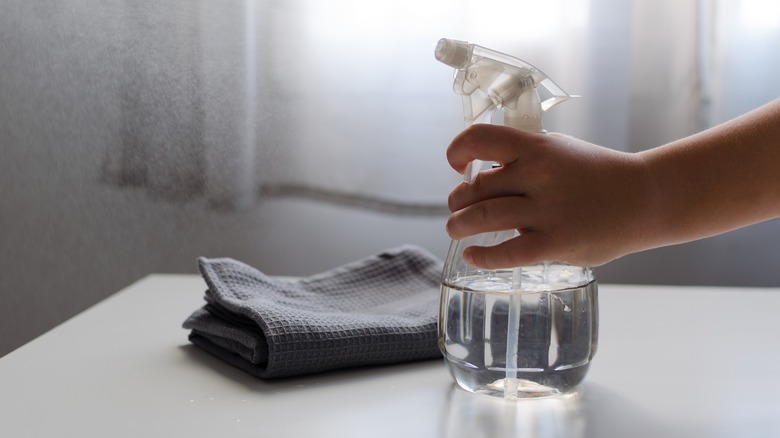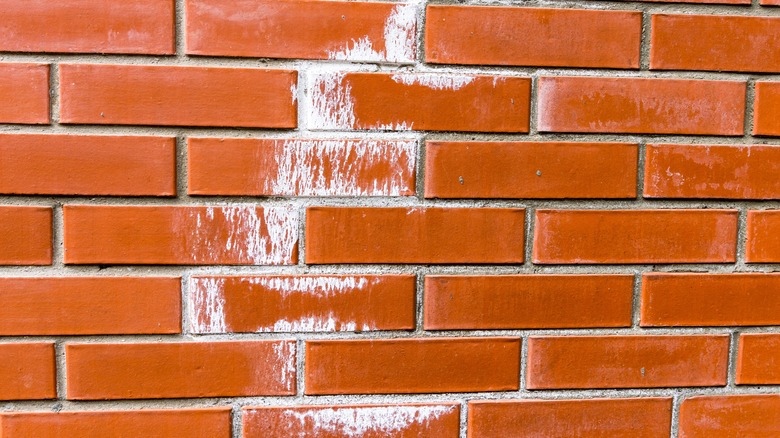Banish That White Powder From Your Walls With An Item You Have In The Kitchen
If you've noticed that a white powder has appeared on concrete walls in your home or basement recently, it may be a substance known as efflorescence. Efflorescence is a crystalline salt deposit that commonly appears on concrete as well as other construction materials such as brick, stone, and stucco.
Efflorescence develops when water makes its way through materials and then evaporates. Some people mistakenly believe that efflorescence is mold, but fortunately this isn't the case. However, it can be a sign of hidden water damage and can indicate a risk of mold in the area. If left unchecked, efflorescence can also cause wall materials to deteriorate. That's why it's important to get rid of it when you first notice it show up. You should also inspect your home to look for moisture and mold issues.
As for efflorescence itself, removing it from your walls isn't that difficult. Doing so requires an item that you probably already have in your home's kitchen. Distilled white vinegar works well for removing efflorescence and can help you get rid of it quickly.
How to get rid of efflorescence with vinegar
Due to vinegar's acidity, there are a lot of ways that you can use vinegar to fix issues around the house. It can also help to break down crystallized mineral deposits and eliminate efflorescence from the walls in your home. To get rid of efflorescence, create a solution of 1 part distilled white vinegar and 2 parts water. Consider adding the mixture to a spray bottle to make the water and vinegar solution even more convenient to use.
After creating your homemade solution, you can use it as a spot treatment for efflorescence. Spray a bit of the mixture onto any efflorescence deposits that you see on your walls, then take a wire brush or scrub brush and gently scrub the solution until you're satisfied. Wait a few minutes and let the solution sit before rinsing it off using warm water. Ensure that all remaining efflorescence is gone from your walls. If necessary, repeat this process to ensure all remaining residue has been eliminated.
What efflorescence means for your home
It's important to recognize that efflorescence isn't the same as mold growth and is completely harmless. However, it's a good idea to remove it for aesthetic reasons. Although it in itself isn't dangerous, it could be a sign of other issues, such as a deeper moisture problem and potential for structural issues and mold growth. You'll need to check for these problems and deal with them after scrubbing the efflorescence away.
Efflorescence may result from rainwater or groundwater, making its way through the soil and saturating your walls. In the case of exterior walls, it could be caused by a sprinkler or another external water source. It might also be due to excess humidity and condensation. Finally, it could also be due to an interior plumbing leak in your home, so you'll want to inspect the area and determine the root of the moisture issues you're having.
Also worth noting is that efflorescence is not the same as calcium deposits, also known as lime buildup. Calcium deposits are denser and thicker and appear as white streaks. Like efflorescence, limescale also occurs when evaporating water moves minerals to the surface of a building material. It can indicate similar moisture problems and may be a sign of water damage. Fortunately, it can also be treated in the same way, using a mixture of white vinegar and water.


